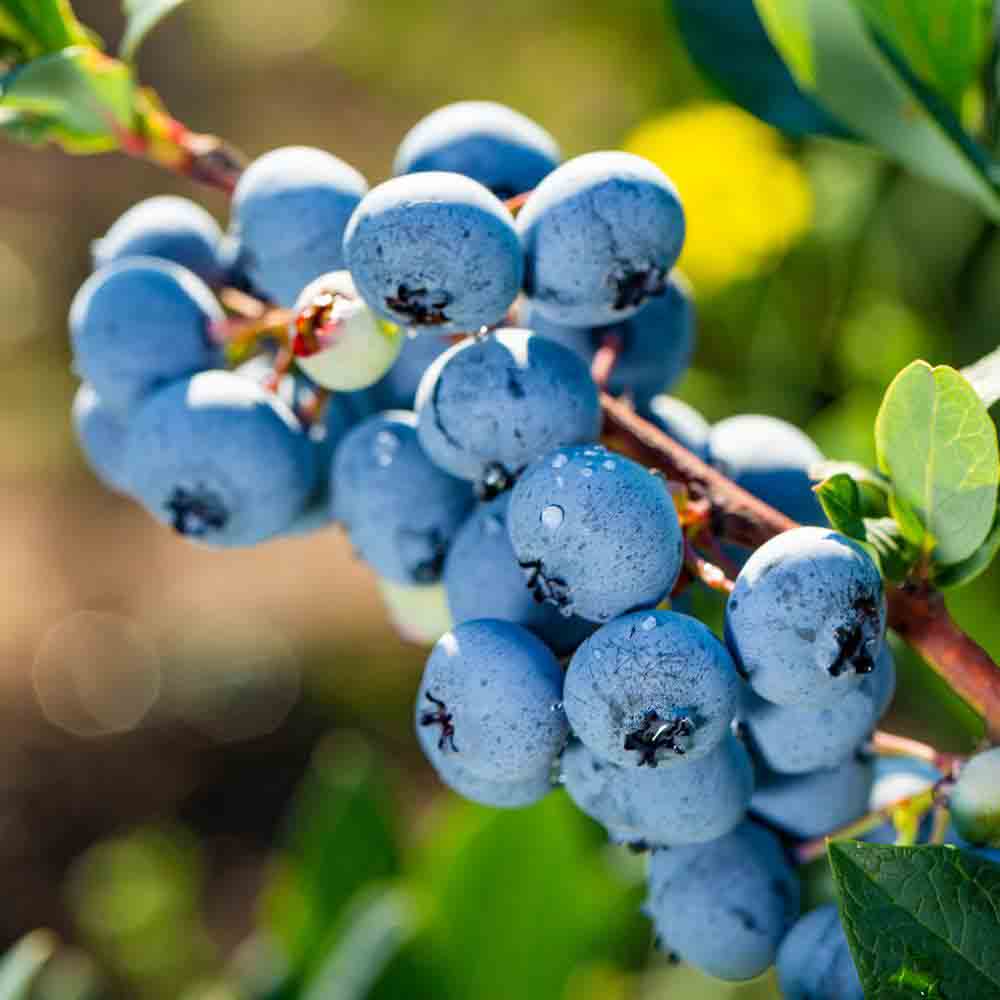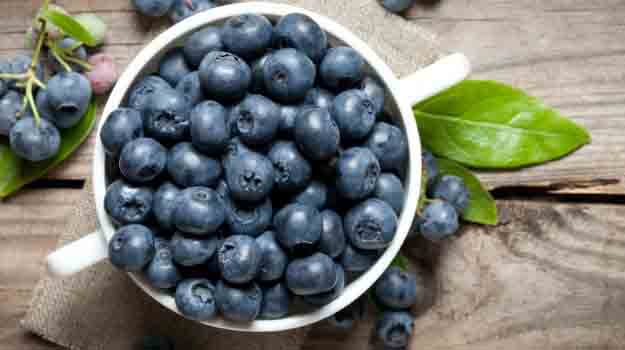Blueberry Profile
Written by admin
Nov 03 2020

Blueberry is a low perennial shrub belonging to the genus Vaccinium of the azalea family. It is native to North America and East Asia, distributed in North Korea, Japan, Mongolia, Russia, Europe, North America, and China's Heilongjiang, Inner Mongolia, Jilin Changbai Mountain, and other countries and regions. It grows at an altitude of 900-2300 m.
Blueberry morphological characteristicsFruitInflorescenceLeafBlueberry growth habit and growing environment and distributionBlueberry efficacy and roleImprove visionStrengthen immunityAnticancerAnti-oxidant and slow down the agingBlueberry cultivation
Blueberry fruits are rich in nutrients, especially rich in anthocyanins. It not only has good nutrition and health effects, but also has the functions of preventing brain aging, strengthening the heart, anti-cancer, softening blood vessels, and enhancing human immunity. The earliest country for blueberry cultivation is the United States, but it has not reached a century of cultivation history. Because of its high health value, it is popular all over the world. It is one of the five healthy fruits recommended by the World Food and Agriculture Organization.
Blueberry morphological characteristics
Fruit

Inflorescence
The flowers of blueberries are racemes. The inflorescence is mostly lateral, sometimes terminal. Usually composed of 7 to 10 flowers, the flowers are bisexual, solitary or twin in the leaf axils, radially symmetrical or bilaterally symmetrical. The flower buds of blueberries generally grow on top of the branches. In spring, flower buds germinate first for 3 to 4 weeks before reaching full bloom. When the flower buds germinate, the leaf buds begin to grow, and when the flower buds are in full bloom, the leaf buds germinate and grow to their proper length.Leaf
Blueberries have evergreen and deciduous leaves. The leaves of blueberries are single leaves alternate, sparsely opposite or whorled, and the whole or serrated. High, semi-high, and low-bush blueberries shed their leaves before winter. Rabbit eyes are evergreen, and the leaves can remain on the tree for 2 to 3 years. The most common leaf shape is oval without stipules. The size of the leaves varies depending on the species. The leaf length of tall bush blueberries can reach 8 cm, while that of low bush blueberries is generally less than 1 cm. The leaf length of rabbiteye blueberries is between high bush blueberries and low bush blueberries.Blueberry growth habit and growing environment and distribution

It exists in the world, mainly distributed in areas with cool and sunny climates, such as North Korea, Japan, Mongolia, Russia, Europe, North America, and the Heilongjiang, Inner Mongolia, and Changbai Mountain regions of mainland China. It grows in areas between 900 meters and 2300 meters above sea level. It is more common in coniferous forests, peat swamps, mountain tundra, and pastures, and is also an important part of heather shrubs.
The quality of blueberries in North America is world-renowned. Half-highbush blueberries are suitable for planting in cold temperate regions, northern highbush blueberries and some semi-highbush blueberries are suitable for planting in warm temperate regions, and rabbit-eye blueberries and southern highbush blueberries are suitable for planting in subtropical regions.
Blueberry efficacy and role
Blueberry fruit has the functions of improving eyesight, enhancing self-immunity, anti-cancer, enhancing memory, anti-oxidation, and slowing down aging.Improve vision

Strengthen immunity
Blueberry berries can enhance the body's resistance to infectious diseases. Blueberry berries are a high-fiber food that can be a good source of fiber in the daily diet. Blueberries contain a lot of potassium. Potassium can help maintain fluid balance in the body, normal blood pressure, and heart function. Blueberries have the effect of resisting free radicals.Anticancer
Blueberry berries are also a low-calorie food. The nutrients contained in blueberries have an inhibitory effect on cancers in the middle and early stages. The anthocyanins in blueberry fruits are very powerful antioxidants, which can help prevent the formation of plaque in the arteries and various cancers, reducing the possibility of cancer.Anti-oxidant and slow down the aging
Natural blueberry anthocyanins are the most effective antioxidants. USDA research shows that among more than 40 kinds of fruits and vegetables that people often eat, blueberries have the strongest antioxidant capacity.
Blueberry cultivation
Blueberries can only grow healthily in an acidic medium. The pH value of the cultivation soil is between 4 and 5, which is most suitable for blueberry growth. This problem has plagued many blueberry lovers because the pH value of pastoral soil is generally between 6 and 7. Even the acidic soil sold in the flower and bird market has the lowest pH value between 5.5 and 6.After the blueberry seedlings are planted in pots, they are not exposed to the sun indoors and kept in a ventilated place for a week. This process is called slow seedlings. It can be moved outside the balcony for normal maintenance after a week. Blueberries like wetness, especially in summer, they need enough water every day. In the absence of sufficient sunlight, the growth of blueberries is stagnant, and even if they bloom, they will not bear fruit. Blueberries do not have high requirements for fertilizer, but big fat will hurt it. There is a certain amount of leaf soil in the medium, which can meet the growth needs of blueberries. Usually, an appropriate amount of top dressing is required to ensure the normal growth and quality of the fruit.
Latest Updated
- Benefits of Bugleweed - 7 Science-backed Health Benefits
- Bugleweed Dangers & Side Effects - Is It Poisonous?
- How to Plant Evergreen Trees - What You Should Know
- When to Plant Evergreens - Grow Guide for Evergreen Trees
- 12 Wonderful Evergreen Shrubs for Your Garden
- 12 Popular Evergreen Plants with Pictures for Beginners
- When And How To Prune A Lilac Bush Like a Pro
- How to Grow & Care for Lilac Vine (Hardenbergia Violacea)
- Japanese Lilac Tree (Syringa Reticulata) Care & Propagation Guide
- Shumard Oak Pros and Cons - What to Know
Popular Articles
- Winter maintenance of Antirrhinum Majus
- How to Grow Terminalia Mantaly Tree
- How to Grow and Care for Crossostephium Chinense
- How to grow Antirrhinum Majus in spring
- Peristeria Elata (Dove Orchid) Profile: Info & Care Guide
- Underwatered Snake Plant (Sansevieria Trifasciata) - Signs And How To Fix
- How to Care for Brazilian Jasmine Plant (Mandevilla Sanderi)
- How to Grow & Care for Graptopetalum Purple Delight in Summer
- Rosa Chinensis (China Rose): Plant Growing & Care Tips
- How to Care for Baby Sun Rose (Aptenia Cordifolia)